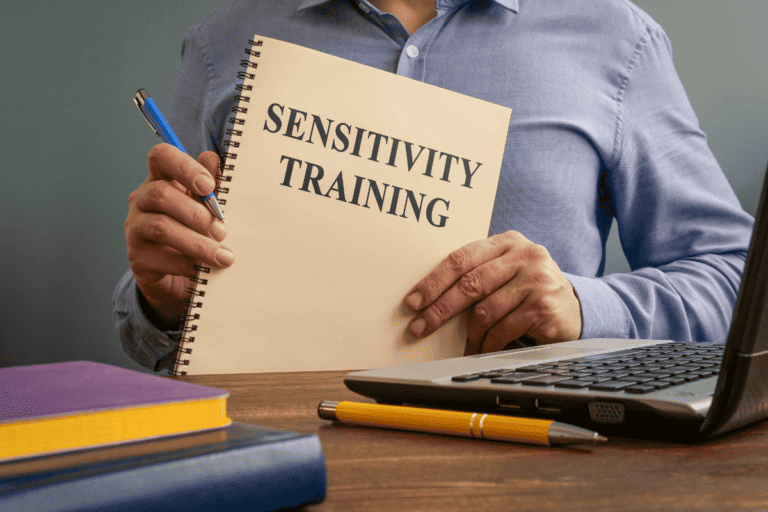Creating Conflict and Resolution in Your Narrative
In the world of storytelling, conflict is the spice that adds depth and intrigue to your narrative. Think about some of your favorite books or movies—what kept you turning the pages or glued to the screen? It was likely the tension, the obstacles, and the uncertainty that the characters faced.
But creating conflict is only half the battle; resolving it in a satisfying and meaningful way is equally important. As a writer, you know the power of a well-crafted conflict and resolution, but are you effectively utilizing these elements to keep your readers engaged and invested in your story?
Key Takeaways
- Internal conflict adds depth to characters and creates relatable human experiences.
- Utilizing external conflict effectively adds depth and tension to the story.
- Craft turning points and plot twists to add excitement and engage readers.
- Emotional resolution and closure can be achieved through forgiveness and reconciliation.
Understanding Conflict Types
Understanding different types of conflict is crucial for creating a compelling and engaging narrative.
Identifying internal conflict is essential for developing well-rounded characters. This type of conflict arises within a character's mind and emotions, often involving their desires, beliefs, or fears. It adds depth to the character and creates relatable human experiences for the readers.
External conflict dynamics, on the other hand, involve the character's struggle against outside forces such as nature, society, or other characters. These conflicts can drive the plot forward, adding tension and excitement to the narrative.
Establishing Character Conflict
To create compelling character conflict, delve deep into their motivations and desires, igniting the sparks of tension that will drive your narrative forward. Establishing character conflict is essential for gripping storytelling and engaging your readers. By understanding the inner turmoil of your characters, you can create multifaceted conflicts that drive the plot and character development.
- Motivations: Explore what drives your characters. Their desires, fears, and ambitions can lead to conflicting goals and actions.
- Backstory: Uncover their past experiences and how these shape their current behaviors and beliefs, potentially leading to internal conflicts and external clashes with others.
- Relationships: Consider the dynamics between characters. Conflicting personalities, values, or goals can create compelling conflicts that drive the narrative.
- Growth: Show how characters evolve over time. Conflict can serve as a catalyst for personal growth and transformation.
- External Forces: Introduce external factors such as societal expectations, environmental challenges, or antagonistic forces that push characters into conflict.
Utilizing External Conflict
As you harness the internal conflicts of your characters, it's crucial to also master the art of utilizing external conflicts to propel your narrative forward. Utilizing external conflict effectively can add depth and tension to your story, creating a dynamic and engaging experience for your readers. One effective way to do this is by leveraging character relationships within the setting dynamics to create compelling external conflicts that push the story forward. The table below provides some examples of how character relationships and setting dynamics can be utilized to create external conflicts in your narrative.
| Character Relationships | Setting Dynamics | External Conflict |
|---|---|---|
| Sibling Rivalry | Small Town Environment | Competition for a local leadership position |
| Love Triangle | Urban Cityscape | Rivalry for a promotion in a competitive workplace |
| Mentor-Protégé Dynamic | Post-Apocalyptic World | Struggle for survival in a harsh, desolate landscape |
Building Tension Through Rising Action
You can build tension in your narrative by incorporating plot twists that keep readers on the edge of their seats. As the rising action unfolds, make sure to escalate the conflicts your characters face, intensifying the stakes and drawing the reader deeper into the story.
Plot Twists for Tension
Introduce unexpected events that propel the story forward, creating suspense and keeping readers engaged as tension builds through rising action.
- Character Betrayal: A beloved character unexpectedly turns against the protagonist, causing internal conflict and raising the stakes.
- Revelation of Secrets: Uncover a well-kept secret that completely changes the direction of the plot, leaving readers shocked and eager for more.
- False Victory: Just when it seems like the protagonist has overcome a significant challenge, introduce a twist that shatters their progress and plunges them into even deeper conflict.
- Unexpected Alliances: Characters form alliances or allegiances that defy expectations, leading to complex power dynamics and heightened tension.
- Moral Dilemmas: Force characters to make difficult decisions that challenge their morals and beliefs, adding layers of internal conflict and external tension.
Character Conflicts Buildup
Amidst the plot twists for tension, the escalating conflicts between characters serve to intensify the rising action and captivate readers. As characters engage in emotional and psychological battles, their internal struggles add depth to the narrative, driving the story forward and keeping the audience engaged. Character conflicts are instrumental in creating a sense of urgency, leading to character development and revealing underlying motivations. The tension that arises from these conflicts can evoke a range of emotions in the audience, ensuring they remain invested in the outcome of the characters' struggles. To illustrate the impact of character conflicts, consider the following table:
| Character Conflict | Emotional Response |
|---|---|
| Betrayal | Anger |
| Misunderstanding | Frustration |
| Hidden Agenda | Suspicion |
Crafting Turning Points
Now it's time to focus on crafting turning points in your narrative. These pivotal moments can come in the form of unexpected plot twists or significant character decisions. They propel the story forward and keep readers engaged, so it's crucial to carefully consider how you want to execute these turning points.
Plot Twists
Crafting turning points in your narrative can add depth and excitement to your story, engaging your readers and keeping them on the edge of their seats. When it comes to plot twists, there are several key elements to keep in mind:
- Creating unexpected, dramatic plot twists: Surprise your readers with unexpected events that challenge the direction of the story.
- Subverting reader expectations: Turn clichés on their heads and defy traditional storytelling conventions to keep your audience guessing.
- Creating emotional turmoil: Infuse your plot twists with emotional impact, making your readers deeply invested in the outcome.
- Adding depth to character development: Use plot twists to reveal new layers of your characters, exposing their vulnerabilities and strengths.
- Maintaining coherence: Ensure that your plot twists are organic to the narrative and don't feel forced or disconnected.
Crafting well-executed plot twists can elevate your storytelling and leave a lasting impression on your readers.
Character Decisions
When crafting turning points in your narrative through character decisions, consider the pivotal moments that drive the plot and reveal the true nature of your characters.
Character decisions are crucial for character development and can create moral dilemmas that add depth to your story. These decisions should be meaningful and impactful, forcing your characters to confront their beliefs, values, and desires.
By placing your characters in situations where they must make difficult choices, you can reveal their inner conflicts and vulnerabilities, allowing for a more compelling and relatable narrative.
These pivotal moments can also serve as a springboard for character growth and transformation, leading to a more engaging and emotionally resonant story.
Ultimately, character decisions play a vital role in shaping the trajectory of your narrative and in captivating your readers.
Resolving Conflict With Consequence
To effectively resolve conflict with consequence, you must consider the impact of your actions and the repercussions they may have on all involved parties. When addressing conflict resolution through consequence, it's essential to understand that impactful consequences can lead to significant character growth.
Emotional resolution can be achieved by allowing the characters to experience the weight of their actions. This, in turn, leads to a more authentic and relatable storyline.
Consequence based closure provides a sense of finality and allows for the plot to naturally progress. It's important to remember that consequences should be proportionate to the actions taken by the characters, ensuring a balanced and realistic narrative.
Achieving Emotional Resolution
You can achieve emotional resolution in your narrative through closure by embracing forgiveness, healing through understanding, and redemption through reconciliation.
By allowing your characters to forgive and let go of past grievances, you can provide them with the closure needed to move forward in the story.
Understanding and empathy can also lead to healing, while reconciliation can offer the opportunity for redemption and growth in your narrative.
Closure Through Forgiveness
Achieving emotional resolution through forgiveness can bring a sense of closure and peace to the conflicts in your narrative. Forgiveness is a powerful tool that can lead to emotional healing and resolution, allowing your characters to move forward and find closure. Here are some key ways in which closure through forgiveness can be achieved:
- Letting Go: By forgiving, you release the negative emotions associated with the conflict.
- Empathy: Understanding the perspective of the other party can foster forgiveness and promote closure.
- Self-Healing: Forgiveness can be a form of self-care, allowing you to heal and move on.
- Reconciliation: It can pave the way for reconciliation, mending relationships and bringing closure.
- Moving Forward: Forgiveness allows your characters to leave the past behind and embrace new beginnings.
Healing Through Understanding
Healing through understanding promotes emotional resolution and fosters a sense of closure in your narrative. By embarking on a healing journey, you delve into emotional understanding, paving the way for self-discovery and personal growth. This process allows you to confront and comprehend the underlying causes of conflict within your narrative, leading to a deeper understanding of the complexities involved. Through this understanding, you can achieve emotional resolution, bringing a profound sense of closure to your story.
| Emotional Understanding | Self-Discovery | Personal Growth |
|---|---|---|
| Unraveling the depths of your emotions | Exploring your inner thoughts and feelings | Embracing change and development |
| Understanding the motives behind actions | Discovering new aspects of your identity | Cultivating resilience and strength |
| Gaining insight into interpersonal dynamics | Reflecting on past experiences and behaviors | Nurturing a positive mindset and outlook |
| Acknowledging the impact of past events | Embracing vulnerability and authenticity | Fostering empathy and understanding |
Redemption Through Reconciliation
How can emotional reconciliation lead to redemption in your narrative?
Redemption through reconciliation is a powerful theme that can bring a profound emotional resolution to your story. By incorporating this theme, you can achieve a sense of healing and closure for your characters and readers alike. Consider these key elements to effectively portray redemption through reconciliation:
- Forgiveness: Explore the transformative power of forgiveness in fostering reconciliation and paving the way for redemption.
- Acceptance: Show how accepting past mistakes and embracing change can lead to emotional reconciliation and eventual redemption.
- Empathy: Portraying empathy between characters can facilitate understanding, forgiveness, and ultimately, redemption.
- Amends: Illustrate how making amends and seeking forgiveness can be a crucial step in the journey towards redemption.
- Transformation: Highlight the positive transformation that occurs when characters reconcile with themselves and others, ultimately leading to redemption.
Balancing Open and Closed Endings
To achieve a balanced narrative, it is essential to carefully consider how to craft an ending that strikes the right equilibrium between closure and openness. Balancing tension, narrative closure, open vs closed endings, and character development through conflict resolution are crucial aspects to consider when wrapping up your story. A well-crafted ending provides a sense of resolution while also leaving room for interpretation and contemplation. Here's a quick comparison to help you understand the differences between open and closed endings:
| Open Endings | Closed Endings |
|---|---|
| Leaves some questions unanswered | Resolves major plot points |
| Allows for reader interpretation | Provides a clear resolution |
| Can create a sense of mystery | Offers a sense of finality |
Understanding the nuances of open and closed endings can help you determine the most suitable approach for your narrative. Whether you opt for an open-ended conclusion to provoke thought or a closed one for a satisfying resolution, the key is to ensure that your ending aligns with the overall tone and themes of your story.
Using Conflict to Drive Character Growth
Utilize internal and external conflicts to propel your characters' personal development and deepen their emotional journeys. Character growth is a fundamental aspect of storytelling, and conflict serves as the catalyst for this development. When weaving conflict into your narrative, consider the following:
- Internal Struggle: Delve into your character's inner turmoil, fears, and desires. Allow readers to witness their internal conflicts, creating a more profound connection and understanding of their development.
- Challenging Beliefs: Introduce conflicts that force characters to question their beliefs and values. This can lead to significant growth as they grapple with conflicting perspectives and navigate moral dilemmas.
- Facing Adversity: Present characters with formidable challenges that push them beyond their limits. Through overcoming these obstacles, they can evolve, gaining resilience and strength.
- Embracing Change: Utilize conflict to disrupt the status quo, compelling characters to adapt and evolve. This can lead to transformative character arcs and profound personal growth.
- Confronting Flaws: Introduce conflicts that force characters to confront their flaws and shortcomings. This can lead to introspection and ultimately foster character development as they strive to overcome their limitations.
Mastering Conflict and Resolution Techniques
Mastering conflict and resolution techniques is essential for crafting compelling and impactful narratives. Conflict resolution isn't just about creating obstacles for your characters; it's also about how they navigate through these challenges, which is crucial for character development. To master conflict and resolution techniques, focus on tension building and plot twists.
When it comes to character development, conflict resolution should force characters to confront their flaws, fears, and desires. This process creates depth and relatability, making the characters more engaging for the readers. Tension building is another important aspect, as it keeps the readers invested in the story. By strategically escalating the conflicts, you can maintain a high level of engagement throughout your narrative.
Furthermore, plot twists are effective tools for resolving conflicts in unexpected ways. They add excitement and intrigue, leaving the readers eager to find out what happens next. Mastering conflict and resolution techniques involves skillfully intertwining these elements to create a captivating and satisfying narrative. Keep honing these techniques, and your storytelling will become more compelling and memorable.
Conclusion
So, when it comes to creating conflict and resolution in your narrative, the key is to keep the tension high and the stakes even higher.
By understanding different conflict types, establishing character conflict, and utilizing external conflict, you can build a compelling story that keeps readers on the edge of their seats.
Remember, every cloud has a silver lining, and by mastering conflict and resolution techniques, you can create a truly unforgettable narrative experience for your audience.





